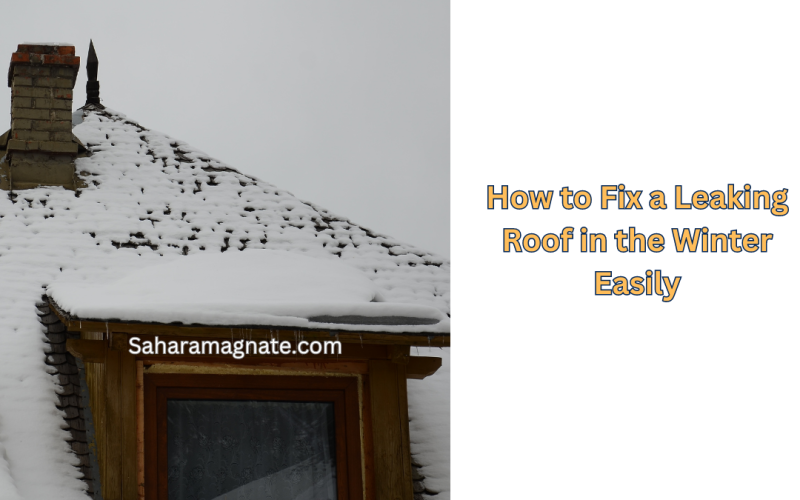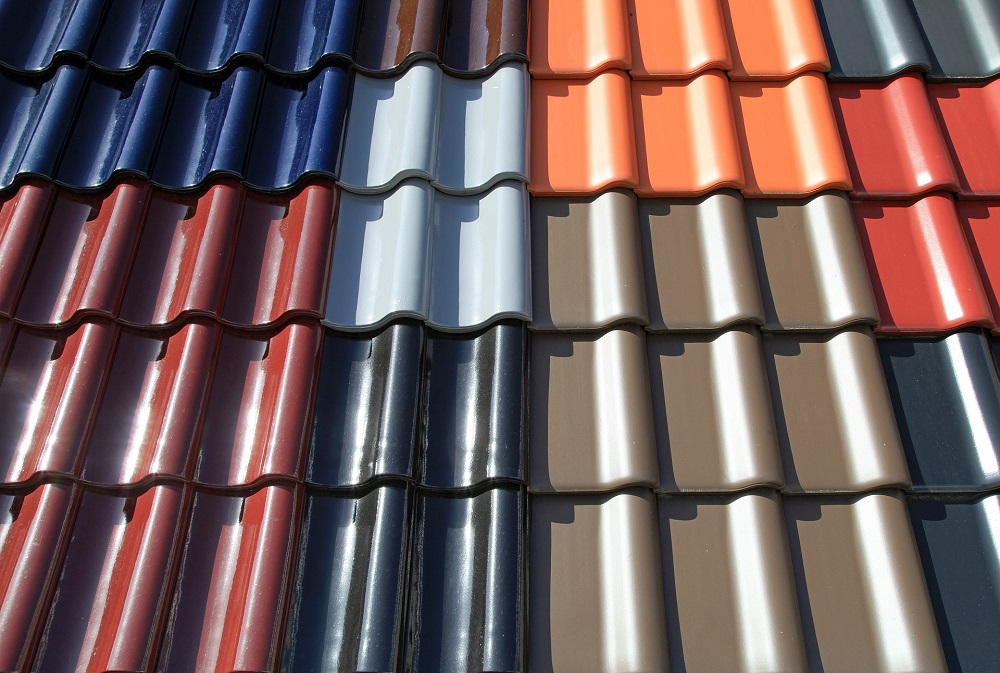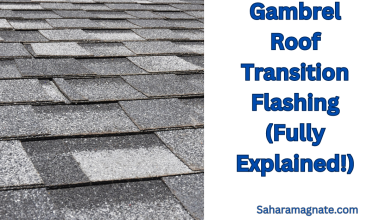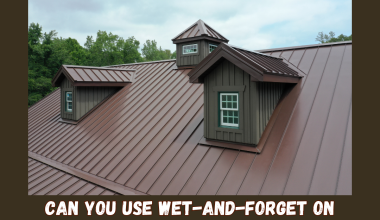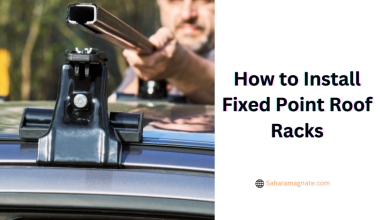Dealing with a leaking roof in the winter can be one of the most frustrating and stressful issues a homeowner can face.
Whether it’s snow, ice, or wind-driven rain, fixing a leak in chilly weather is never easy. But don’t worry – you don’t have to call an expensive contractor to get the job done.
Let’s look at some simple steps to fix a leaking roof in the winter without breaking your budget.
We’ll cover everything from identifying the source of the leak and effectively patching it up.
Plus, we’ll review some key tips and tricks you need to remember if you decide to take matters into your own hands.
With this guide, you can tackle that pesky roof leak like a pro!
How to Fix a Leaking Roof in the Winter
When temperatures start to drop, you need to ensure that your roof is adequately insulated and maintained so it won’t leak. Fixing a leaking roof in the winter can be tricky, but it doesn’t have to be.
With the proper preparation and supplies, you can fix a leaking roof in the winter quickly and easily.
Step 1: Identifying Winter Roof Leaks
Winter roof leaks can be tricky to identify because they often don’t appear until the snow melts.
The first step is to remove any snow and ice from your roof. If there’s too much ice or snow for you to remove yourself, it’s best to hire a professional to ensure it’s done safely.
Once the snow and ice are removed, check for any signs of saturation on your ceiling or walls—stains, discoloration, bubbling paint, and warped drywall are all indicators of a leak in your roof.
Another way to tell if there’s a leak is by feeling around the area for dampness when it snows.
Standing in the attic near where you think the leak may be occurring and feeling for wetness can also help—just stay out of wet spots to avoid slipping and injuring yourself!
You should also take note of any strange noises from inside the attic or outside, like hissing or dripping.
Also, check for rust spots or cracks around vents, chimneys, pipes and other areas where water leaks.
If you find any suspicious spots, use a hose to test if water leaks through them by spraying gently onto them with a hose inside your home and looking up at your ceiling for any signs of water coming through.
Step 2: Preparing Your Work Area
If you’re getting ready to fix a leaking roof in the winter, you first need to prepare your work area.
You’ll want to ensure you have the right tools and supplies nearby before you start, so it pays to take inventory of what you already have before buying anything else.
Here’s what you should have on hand for your roof repair job:
- Flashlight (or headlamp) and extra batteries
- Thick gloves for protection from cold and sharp objects
- Sturdy ladder for access to the damaged area of the roof
- Hammer and nails for shingle installation
- Roof cement or caulk for sealing joints
- Chalk line tool for marking lines when installing shingles
- Roofing felt (tar paper) to protect against further water damage
- Rubberized asphalt membrane—for waterproofing, if necessary
Step 3: Seal any cracks
Once your supplies are ready, you must climb onto your roof and use a putty knife to remove any existing material preventing water from entering.
It’s time to seal those cracks or replace those missing shingles so no more water will get in.
Ensure all gaps are completely sealed before applying new sealant so no water can seep.
Next, fill any cracks with silicone caulk and replace broken tiles/shingles with new ones.
Step 4: Insulating the Roof
Finally, add additional insulation as needed to protect your roof against future leaks. insulating the roof will keep out the cold air while allowing moisture inside your house or building to escape.
Here are a few tips on how to insulate your roof in the winter:
- Use high-quality insulation materials such as foam, batting, or reflective insulation.
- Ensure all the seams are appropriately sealed with caulk or a sealant of your choice.
- Add extra insulation around any cracks, gaps, or leaks to close off any access to cold air.
- Install insulation boards under your roof deck to prevent condensation from forming on the underside and dripping into your home or business.
- Use multiple layers of insulation if necessary to get adequate coverage and protection from the cold weather outside.
- Be sure to use an attic fan and other ventilation systems to help regulate temperatures inside and outside your home or business space during colder months.
Insulating your roof can be a cost-effective solution for filling in cracks and preventing future leakage—especially during those cold winter months!
Quick Fixes During Cold Weather
If you need to fix a leaking roof in the winter, there are some quick and easy fixes you can attempt.
It’s important to remember that these methods are short-term and can’t replace a complete roof repair.
Here are some of the techniques you may want to try:
Caulking
To fix minor leaks caused by a small hole or gap, use a caulk sealant to keep out water.
Just ensure the roof is completely dry first, then apply the sealant to any holes or gaps causing the leak.
Tarps
Tarps are a great way to temporarily block off bigger leaks or areas that need more attention.
You’ll want to keep an eye on your tarp over time—if it starts sagging or gets damaged, replaces it as soon as possible before rain can get through.
Roof Repair Kits
Finally, there are commercially available roof repair kits that come with almost everything you’ll need to patch up leaks in your roof.
They usually contain substances like rubberized sealant and other materials designed specifically for roof repairs and troubleshooting in cold weather conditions.
Conclusion
If you have a leaking roof in the winter, the best thing you can do is be proactive and take action quickly.
By keeping the roof clear of snow, inspecting for any damage, and sealing any holes or openings, you can help reduce the risk of a leaking roof in the winter. If the problem persists, hiring a professional to address the issue is crucial.
Maintaining your roof regularly is essential to protect it from future damage. Regular maintenance can help to avoid costly repairs and even more extensive damage down the road.
Taking proper care of your roof, including in the winter months, is essential for keeping your home safe and comfortable.
